| Columns Retired Columns & Blogs |
It´s written on my Santa´s letter this year...
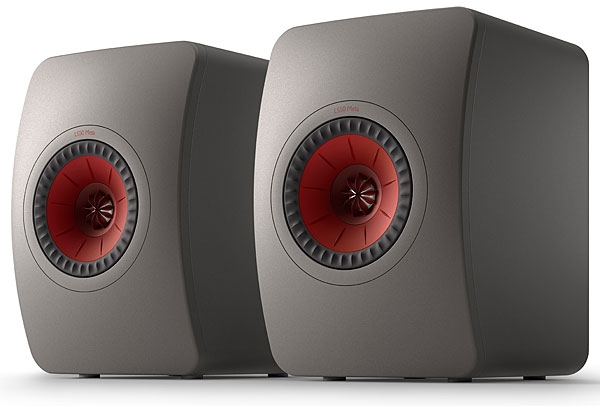
Sam Tellig agreed with me, commenting in May 2014 that he found the LS50's tonality "spot-on, more neutral than sweet. Soundstaging and imaging were top-notch. Definition was superb, ranking with the very best speakers at any price." Stephen Mejias was equally impressed, concluding in June 2014 that with the regular LS50 in his system, "there's just so much more to enjoy—more body, more beauty, more control, more music." (The regular LS50 lacks the words "50th Anniversary Model" below the coaxial Uni-Q drive-unit but is otherwise identical.)

I bought a pair of the non-anniversary LS50s after Stephen's follow-up review, and I compared them with the equally superb-sounding but differently balanced and different-measuring Revel M106 in January 2015. Since then, I have used my LS50s as the primary reference for my reviews of standmounted loudspeakers.
Introducing the Meta
Now, eight years after its first appearance on the high-end audio stage, the LS50 has a successor, the LS50 Meta. The Meta is priced the same: a penny less than $1500/pair. It's the same size—11.9" (302mm) H × 7.9" (200mm) W × 11" (280.5mm) D (including binding posts)—and 1.4lb heavier than the original, at 17.2lb (7.8 kg). Visually, the only differences are an elegant matte finish compared with the original gloss and the fact that the chamfered rear panel now stands proud by one-tenth of an inch rather than being set flush.
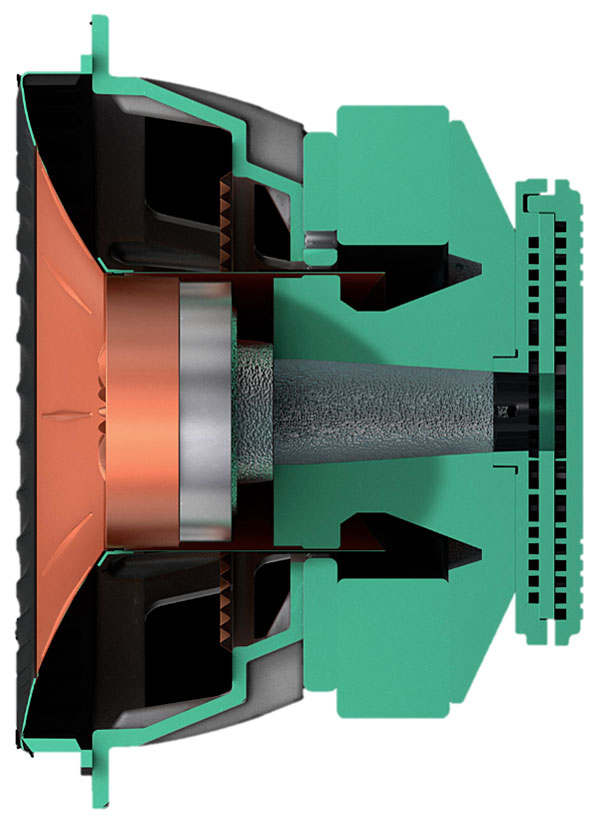
The coaxial Uni-Q drive-unit, now in its 12th iteration, includes a new cone-neck decoupler and a symmetrical motor system, these intended to optimize the speaker's dispersion. The cross-bracing inside the enclosure has been improved, but the main internal change is the incorporation behind the drive-unit of an absorptive, dual-layer disc, 3" in diameter and 0.43" thick. This disc is made from a synthetic substance incorporating Metamaterial Absorption Technology (MAT) developed by research organization Acoustic Materials Group for automotive and airplane use. As applied by KEF and optimized with Finite Element Analysis, this disc contains 30 tubular channels, each acting as a narrow-band Helmholtz resonator. The back wave from the tweeter's diaphragm is coupled to the MAT disc with a conical waveguide behind the vented pole-piece. Polyester wadding in front of the absorber fine-tunes the absorption. The resulting structure is said to absorb 99% of the unwanted sound radiating from the rear of the driver at 620Hz and above (footnote 2).
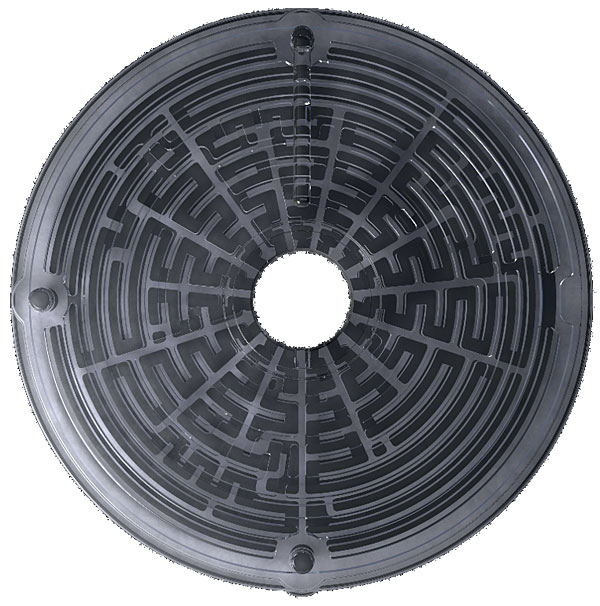
Setup
My samples of the LS50 Meta had serial numbers LS50201763M29N1G and '1765M29N1G. "Designed and Engineered in the UK, Made in China" was written on the serial number panels on the speakers' bases. Although KEF sells matching S2 stands, I set up the LS50 Metas on my usual 24" Celestion stands, which had their single pillars filled with a mixture of dry sand and lead shot. The Metas were placed in the positions in my room where the original LS50s had worked well.
Amplification was provided by a pair of Parasound Halo JC 1+ monoblocks, these connected from the balanced outputs of PS Audio Directstream, MBL N31, and Okto dac8 Stereo D/A processors, each sent audio data from my Roon Nucleus+ server. The PS Audio and MBL DACs were connected to my network, the Okto to the Roon server via USB.
Sonics
The Meta's low frequencies sounded identical to those of the original LS50. The half-step–spaced low-frequency tonebursts on Editor's Choice (16/44.1k ALAC file, Stereophile STPH016-2) spoke very cleanly, with no emphasis on any of the tones, though the output was shelved down a little below 100Hz compared with the Marten Oscar Duos that had preceded the KEFs in my listening room and that Michael Fremer reviewed in November 2020.
And as I wrote in 2012, with the thunderous 16th-note sub-bass line in "Limit to Your Love," from James Blake's eponymous album (16/44.1k ALAC, A&M), the LS50 Meta was having to work harder than it would like to at anything approaching musically satisfying levels. A little higher in frequency, the fretless bass guitar that plays the melody on Michael Hedges's version of "After the Gold Rush" (16/44.1k FLAC, from Aerial Boundaries, Wyndham Hill/Tidal) was reproduced with convincing presence and good separation between the evocative melody line and the same instrument's low-frequency pedal notes.
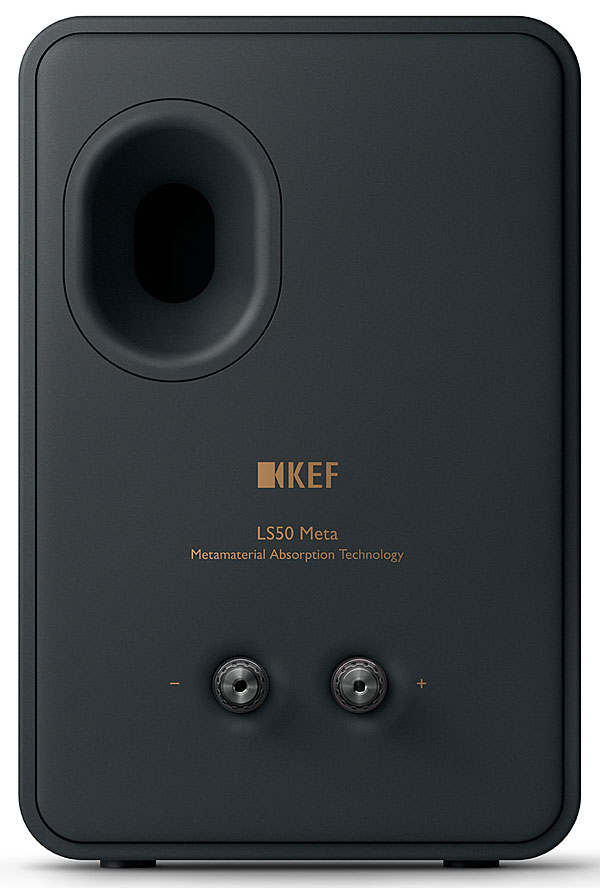
The Metas painted a transparent window into the recorded soundstage, not just with this recording but with everything I played. I was continually surprised by how recordings I thought I knew well were presented with detail that I had not fully appreciated with the earlier LS50s. The Roon app's Radio function reminded me that I should play Jon Hassell's late-1990s album Fascinoma (24/88.2k FLAC, Water Lily). Kavi Alexander had captured the sound with a Blumlein pair of custom microphones designed by Tim de Paravicini. I had always felt that Kavi had placed the microphones a little too far away from the musicians in the highly reverberant chapel, but listening to "Suite de Caravan" from this album on the LS50 Metas, the wide-angle relationship between Jon Hassell's upfront trumpet and Jackie Terrasson's farther-back piano in the cavernous space clicked into focus.
While preparing this review, I had a Skype conversation about MAT with Jack Sharkey, KEF's senior marketing and technical communications manager. Sharkey had urged me to listen to "New Frontier" from Donald Fagen's The Nightfly. There are two versions of this album in my library, 24/48k ALAC files I ripped from a DVD-A, Warner Bros. R9 78138, and an MQA-encoded 24/448k FLAC version from Tidal. Both these versions have a more respectable dynamic range than the CD release, and while their levels seemed well-matched, the Metas revealed that there was a little more space between the instruments with the MQA recording, unfolded to 24/96 by Roon. The vibrato'd, chunky character of the Fender Rhodes electric piano was more evident than it had been with the original LS50s, and such detail as the faint cloud of reverberation around the instrument in the song's coda was more readily deciphered.
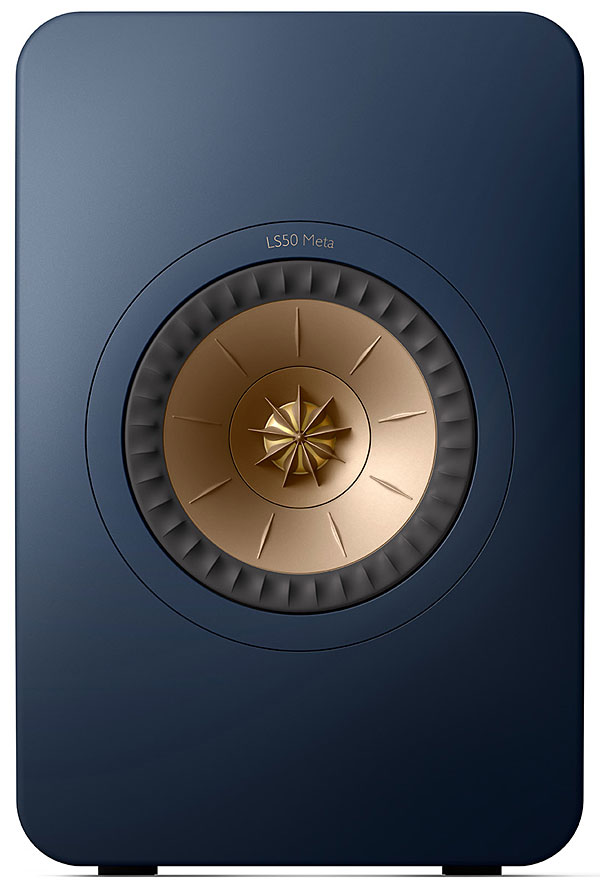
Fagen's lispy voice had a little more treble energy than it had with the 2012 LS50s, but it was more physically present in the room with the LS50 Metas; vocal images were especially palpable with these speakers. (I am reminded of something Bob Stuart had told me in the 1980s, that loudspeakers that have the same width as the human head always excel with vocal reproduction due to the similarity between the sounds' intensities.) On the LP Fairytales (24/192 needle-drop from Odin LP03), the masterful way the late Norwegian singer Radka Toneff uses grace notes and the way she points the ends of phrases with vibrato were more clear with the KEF LS50 Meta than with the Marten Oscar Duo or the Bowers & Wilkins 705 Signature that I reviewed in December 2020.
I finished my auditioning of the KEF LS50 Metas with the Carpenters' "Goodbye to Love" (DSD64 file, from A&M/Acoustic Sounds). I have always loved the way Karen Carpenter effortlessly phrases the song's meandering melodic line. As with Fagen and Toneff, the singer was physically present via the Metas. And in the song's coda, as the descending bass scales and ascending choral "aaahs" accompanying Tony Peluso's fuzzed and compressed guitar solo faded away, it was as if the little KEF loudspeakers had opened a door into musical perfection.
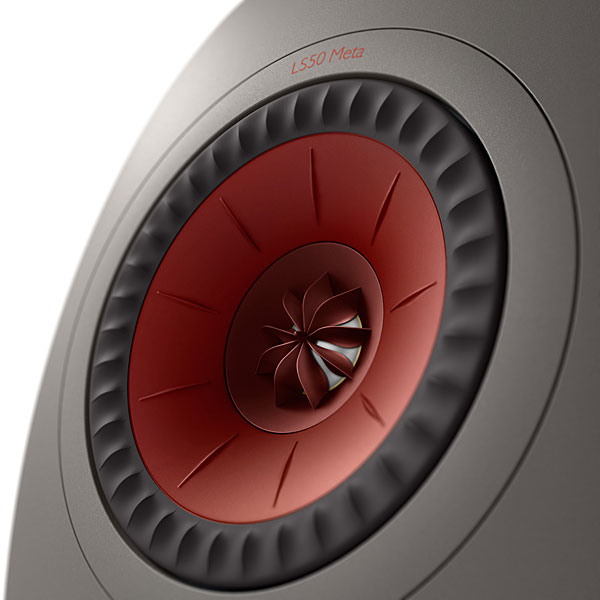
Conclusion
The original LS50 might not have the low-frequency extension and power of the Marten Oscar Duo or the Golden Ear BRX that I reviewed in September 2020. Neither does it have the airy high frequencies offered by the Bowers & Wilkins 705 Signature. But to a greater extent than those three superb standmounts, the LS50 gave a palpable "reach-out-and-touch" soundstage. The LS50 Meta equals its predecessor in that respect but improves on its presentation of low-level detail and has a little more treble energy. As a result, it presents a more transparent window into the recorded soundstage without compromising the ability to communicate the music's message. Highly recommended.
Footnote 2: See "Metamaterial Absorber for Loudspeaker Enclosures" by Sebastian Degraeve and Jack Oclee-Brown, AES convention paper 10341, 148th Convention, June 2020. Available as a free download here.

https://images-na.ssl-images-amazon.com/images/I/71P6kaBRLnL._AC_UX385_.jpg

If you can wait for a few months, these Meta versions ( previously loved ? ) will probably sell for about half of MSRP.
The earlier versions are selling for $700 approximately which is a good thing for a Chinese product.
Schiit gear sells on eBay for closer to 75% of MSRP but it's all made in USA.
A used pair of British made LS3/5a will sell for Considerably More than these KEFs but they are all the exact same loudspeaker as the BBC design mandates. ( the venerable LS3/5a remains a Gold Standard Transducer )
Tony in Venice

The "Introducing the Meta" section of the review gives the price as "a penny less than $1500/pair", as does the KEF.com website, but the Specifications section has " $1599/pair".
A slip of my typing finger. Have corrected the error and my thanks for finding it.
John Atkinson
Technical Editor, Stereophile

You are welcome, and thanks for another fine review and excellent photography.

Thanks John - Because of your rec, among other reasons, I just ordered an M10 as a first (easy) step into this world. Do you think these pair well overall? A significant upgrade in sound (for the price) against something like the B&W 606 Anniversary?
Thanks.

Thanks John
You're welcome.
Because of your rec, among other reasons, I just ordered an M10 as a first (easy) step into this world. Do you think these pair well overall?
Yes, especially as the M10 incorporates Dirac Live EQ, which can compensate for room acoustic problems and extend the KEF's low frequencies. See how Dirac works with the original LS50 at www.stereophile.com/content/nad-masters-series-m10-streaming-integrated-amplifier-trying-dirac-live-room-correction.
John Atkinson
Technical Editor, Stereophile

Good work Kef- a high-performance speaker at a great price. As suitable for audiophiles as for non-audiophiles, and would look great in any room.
The only question now is how they compare with the wireless version, and what sort of gear would be needed to get the passive version to sound on-par with the wireless version!
A pair of either, with well setup subs, should be very impressive.

For those of us not allowed to put speakers 3 feet from the rear-wall, was wondering how far from the rear-wall you would recommend for these?

One thing to remember is that the LS50 Metas come with two options for stuffing the ports and a guide in the owners manual in how to approach it. If I remember from my setup a few days ago, if the rear panel of the Meta is between 0 and 20cm from the wall, they recommend fully stuffing the port (donut hole foam in donut ring). From 20-50cm they recommend using the hollow donut ring foam piece to partially close it. From 50cm on you run the ports wide open.
Mine sit 25cm from my rear wall in a relatively small room. With the ports open at that position, bass was indeed too prominent. With the hollow donut ring in place that helped perfectly. I’ve since done a bunch of REW measurements and the donut ring brought them perfectly into line with the rest of the frequency response.

Dutch & Dutch 8C active loudspeaker is much more expensive, but it was designed to work well in close proximity to the room boundary behind the loudspeaker, so it may be a solution to your problem which offers very much better performance.
Alternatively, move the loudspeakers and listening chair into the proper listening position when listening to the loudspeakers, and move them back to where you are "allowed" to keep them when not using them.

"(I am reminded of something Bob Stuart had told me in the 1980s, that loudspeakers that have the same width as the human head always excel with vocal reproduction due to the similarity between the sounds' intensities."
So this is why all of those gigantic speakers at the audio shows sound ridiculous....I listened to the flagship Borrensen speakers at Axpona that people were raving about and Joe Satriani sounded like a hot air balloon head. Not exactly my cup of tea.

Sam has moved on to the LS50 Meta from the original LS50 Anniversary. Resolution is stunning, the best I've heard since I sold my Quad ESL 2805 electrostatics. I hear no cabinet colorations. There is nothing to smear the sound. What this means is you can save money on speakers and buy the best possible electronics. I am using the Chord Qutest DAC, BTW. Cheapskates have never had it so good!

I miss your column and the way you wrote stories about the products and their origins. Greetings to Marina and Merry Christmas.

John, what's your guess as to why KEF would rewire the tweeter 'out of phase' versus the previous version? I could find no reference to that or other related crossover changes in their Meta White Paper. If no related changes are made to a major redesign of a classic, wouldn't this be audible, and/or suspicious? (I listen to Thiels, so perhaps this is more important to me than to KEF? Though I just bought a pair of these!)

It's a good question.
Just a guess, but the answer may be found in Fig.9. Compare the frequency response near the 2.1kHz crossover frequency with the original: A very shallow depression--almost flat--replaces a small but significant rise.
Also note the slight change in the crossover frequency relative to the original: 2.1 vs 2.2 kHz. Hardly surprising. They've apparently found a better way to do the crossover--simple as that.
Jim Austin, Editor
Stereophile

...and that proprietary MQA audio, directly to the KEF LS50 Wireless II network attached active loudspeakers.
For somebody like your niece or daughter who just wants to listen to some good music, isn't concerned about the proprietary nature of MQA if it works well enough, and isn't interested in fussing with a lot of gear and physical media, that may be a very good solution.

Is the Meta strong enough vs. the original LS50 to make you consider trading up?
I'm seriously considering doing so once my wallet allows it.
John Atkinson
Technical Editor, Stereophile

Just announced: https://us.kef.com/kc62-subwoofer.html

Until recently the Brit audiophile product was off my radar.
On a whim for my Budapest flat I purchased the second pair of LS50's, this time the wireless W-designated model. Simply put, it way exceeded my expectations here in the US where I tested them first. The powered model was significantly better than the base speaker with any amplifier I used it with. I am speaking of expensive amps.
The built-in DAC/amps outperformed the nekkid speaker with a far more expensive external amplifier. On many levels. There is no upside to external components and wires not as well matched to the driver as KEF accomplished within the whole package. I think others have had the same experience as I.
But the KEFs didn't realize their performance limits until I dragged them to Budapest in two luggages. My flat there, in an 1847 World Heritage building, has 4 meter high ceilings, meter thick walls, and parquet. Solid that is.
I applied some EQ to take down the bass (along with the speaker's own built-in DSP functions to limit the output, which was overwhelming). I used real time FFT with peak hold on a variety of music streams - with optical wire, no USB here - to get a response almost the same I was getting with two high end headphones. I could superimpose one graph on the other.
It's obvious: KEF got things right with an unusual, but obviously brilliantly-designed and well-built driver in a well-braced cabinet. Pretty much the same driver KEF uses in its $32,000 BLADE. And that tells us a lot.
With the DSP the W model is great; the Meta version probably addresses the issues I had to deal with, with the EQ necessary on the earlier model. John addressed these improvements, and accordingly, I may even buy the newer model for one of my rooms in the US. I am that pleased by the sound of this Brit.
Kick ass - these KEFs are really an unbelievable value at the price.
John probably understated his case for them.
To sum up: At the price, the quality of build and sound, at least speaking for the powered version, KEF made these as "keepers."

From https://us.kef.com/speaker/flagship-hi-fi-speakers/ls50/ls50-meta.html :
LS50 Meta
Driver Unit: 12th Generation Uni-Q with MAT+ 40% frequency response smoothness
Driver rearward Source Absorption: 99% driver rearward sound absorption by MAT
Mid-band Total Harmonic Distortion (THD) at 90dB/1m: THD 0.07%
Extremely low distortion by driver motor redesign
LS50
Driver Unit: 11th Generation Uni-Q
Driver rearward Source Absorption: 60% driver rearward sound absorption by vented tweeter
Mid-band Total Harmonic Distortion (THD) at 90dB/1m: THD 0.1% Mid-band at 90dB/1m

Maybe I don't know how to read all the measurements, but is there a way to understand how well the LS50 meta would play loud in a larger room. I understand it's a compact insensitive speaker.
I have LS50 Anniv editions in my office (15x15) and don't "blast it" because I'm in the house. But my new office (30x35) will be in another building, so I'm thinking of getting LS50 Metas a sub, and say... a NAD M33. I wouldn't mind getting floorstanders if there was a way to quantify the high SPL capability between different options. The price point for the LS50 is just so attractive and I love my Anniv editions, I'm seeing if I should hit the shops to demo some floorstanders.
Thanks for any advice.

It would be interesting, informative and useful to see a curve showing EPDR magnitude with respect to frequency as a third curve added to the graphic showing electrical impedance and phase.
This is just a suggestion, and is not a negative criticism of the measurements and associated commentary which you are already providing, all of it worthwhile. Thank you for your efforts.

Mr. Atkinson: somewhere I recall you praising Karen Carpenter's work in a prior review; and you've done it again here. Just so! Being your contemporary, I recall when the Carpenters were making hits. I pretty much dismissed them at the time for political reasons. (I think President Nixon was a fan.) Courtesy of my wife, I own an LP of their "Singles" which I play often. While I don't care for some of Richard Carpenter's arrangements, his sister shows an unbelievable vocal range and maturity for someone her age. And to think that she supposedly thought of herself as a drummer, not a singer! In my opinion, her vocal command far exceeds any of her contemporaries, especially the over-praised Linda Rondstadt. Linda had a strong voice but unstable pitch, as her foray into the standards with the assistance of Nelson Riddle shows all too well. The original LS-50s are wonderful with Karen Carpenter's voice. Like you, I plan to upgrade to the Metas when the piggy bank is full.

Apparently the real reason the Metas sound different to the LS50s is that they deploy Sealed Suspension Technology (SST) initially developed in the 3001 SEs as a prototype. It evens out turbulence. The tech never made it to the LS50s even though they’re newer than the SEs which is why they can sound a bit shouty if pushed hard. The Metamaterial is understandably probably more of a marketing gimmick.

I just got a pair yesterday and it has been love at first listen.
I'm driving them with a McIntosh MC462 (450 watts per channel, 100+ pound monster), which provides similar power to the amp the reviewer used. I cannot believe how much power these speakers need! Not a flaw or a bad thing, but WOW these things are power hungry, be warned, make sure you either try these on your amp, or plan accordingly. At 'adult loud' levels the needles on the power meter are routinely staying in the 10-50 watt range for the entire track. That is a TON of power. Curious to try these with a less-powerful amp and see what happens.

Looking at the anechoic response, there seems to be quite a dip at 20khz with these compared to the old model, any ideas why?? Zobeled?
https://www.stereophile.com/images/1212KEF50fig3.jpg
Cheers George

Looking at the anechoic response, there seems to be quite a dip at 20khz with these compared to the old model, any ideas why??
I suspect it's diffraction-related. You can see from the lateral dispersion plot that it tends to fill in to the speaker's sides.
John Atkinson
Technical Editor, Stereophile